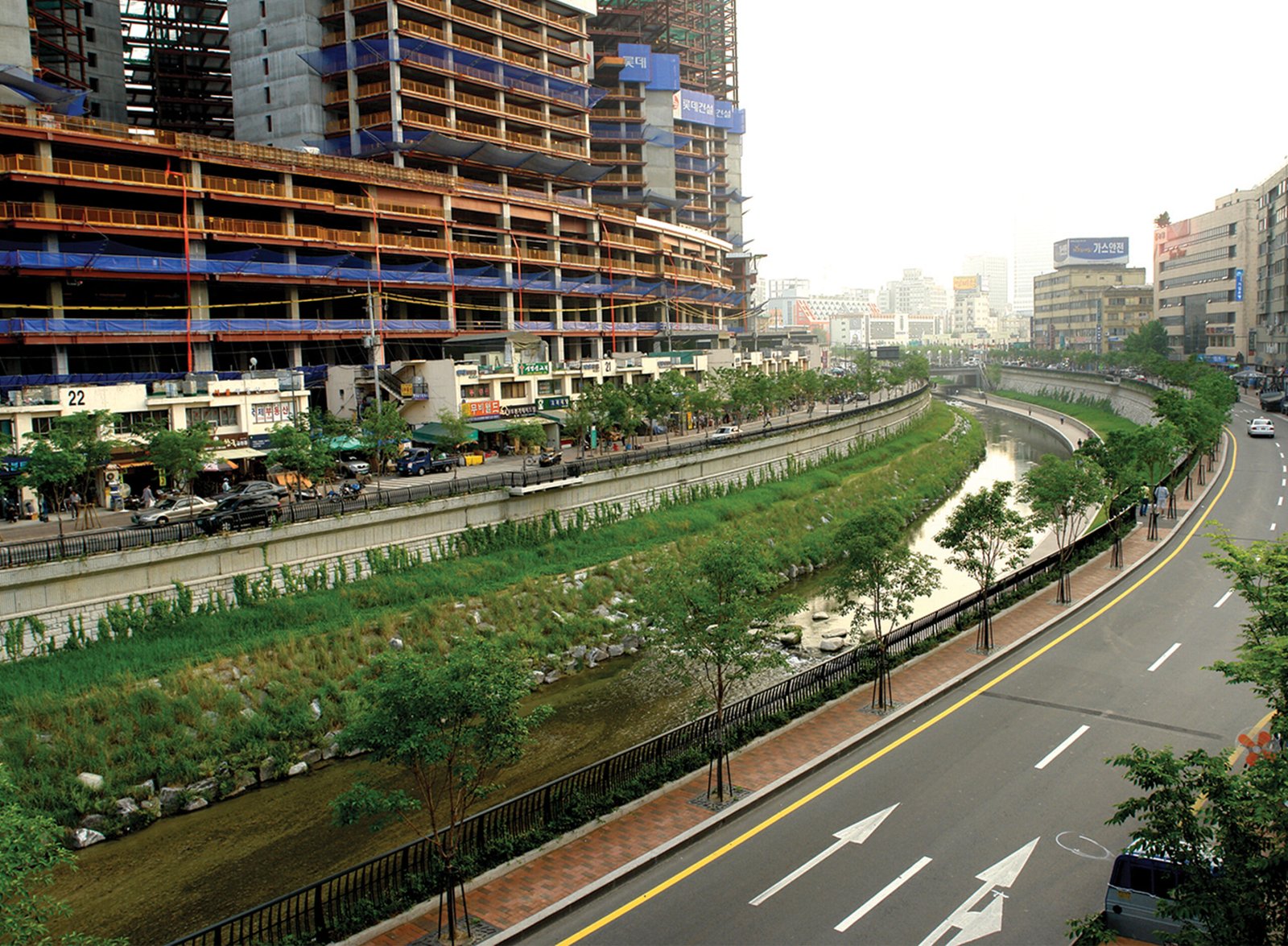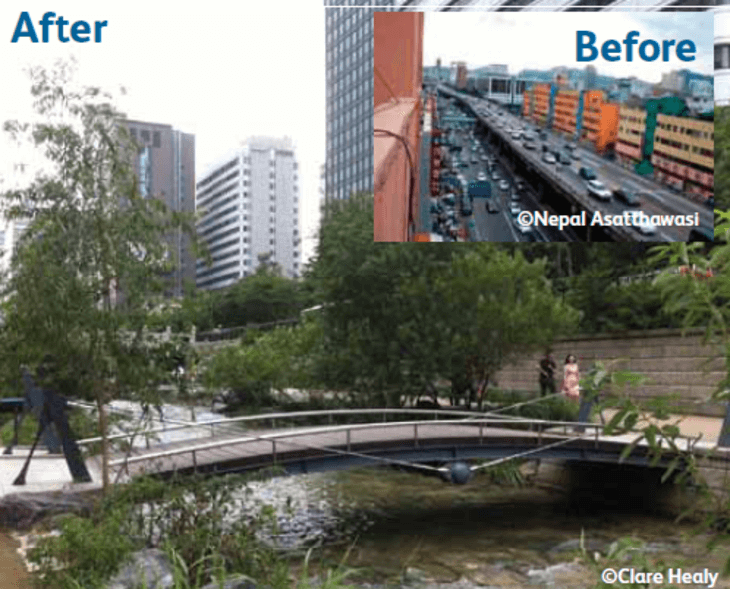Cheonggyecheon, is a public recreational park located in Seoul, South Korea, wherein the government decided to dismantle the 10 lane road and 4 lane highway along the Cheonggyecheon stream. The idea for this was to bring the two different parts of the city together and bridge the gap. Located in the Jung Gu district this structure was an innovative initiative towards promoting interactions among citizens and also act as a tourist attraction was designed by Seoul Development Institute urban design team, Dongmyung Eng, Daelim E&C. The design involved excavating the entire elevated concrete highway structures, followed by exposure of the preexisting natural stream, creating an ambiance an ambiance for the visitors and also intermediate bridges were added to make the entire project to be folded into one.
 Observations
Observations
Studies have revealed that after this major deconstruction and renovation there has been a 4.5%,45%, and 10.3% reduction in urban heat island effect, vehicular sounds and air pollution levels respectively, also there was a subsequent increase of 76%,15% ad 3% in the pedestrian activities, bus ridership and subway ridership respectively. The entire project took a long 3 years 6 months to be designed, constructed and opened for public, which needed supports and involvement of various organizations together. The public agencies that were involved were Central Government, Seoul Municipality, Seoul Metropolitan Government, Cultural Heritage Administration; the citizen organization that was involved was Citizen’s Committee for Cheonggyecheon Restoration Project and the private group that was involved in the procedure was Cheonggyecheon Research Group along with the main designer and engineering association.
The new reconsidered design approach has set an example of how by innovation and collaborative methods the government can indulge in a process of engaging with the people, the residents, local merchants and small scale into a platform to cultivate their respective beliefs with each other. The city was perhaps recreated after the Korean war just by reviving a stream which has et an example of paradigm shift to the entire world. Environmentally, the local residents were to suffer the double chances of any kind of respiratory issues than they are now, the cooling effect of the stream has resulted in an increase in the vegetation as well. The new structure has also proved to have a significant rise in the biodiversity rates and most important the structure provides protection any kind of future flood-like situation.
The site has also played as a catalyst with the state economy, there was a rise in the land prices of the particular along with acting as a tourist attraction, attracting 64,000 visitors daily, has resulted to be a culturally active area.

Sustainability and Challenges
The sustainable approaches that were promoted through the design were primarily re-usage of the big bulk of concrete that was obtained from the highway along with all of the waste iron. A fish spawning ground was created which bridges the Cheonggyecheon and Jungnangcheon,vertical walls were added to provide the visitors an interaction with water. The continuous green corridor has resulted as an encouragement for bicyclist and pedestrians, also an approach to reestablish the waterways which gave a scope of ecological diversion. The challenges that were perhaps involved in this process most importantly was decision of deconstructing the existing highway joining the southern and the northern parts of the city which might increase the traffic congestions, also one of the major concerns were that water is naturally not present in Cheonggyecheon other than the months of summer when it rains.
The Seoul government, however, took up all of these challenges and proposed to build 22 bridges – 12 pedestrian bridges and 10 for automobiles and pedestrians – were proposed to connect the two sides of the Cheonggyecheon. To address the car congestion the use of personal cars were advised to eliminate and rapid bus lines were added, and improved loading and unloading systems were implemented. Finally, to source the water several pump substations were created to get the water from Han River which resulted in a constant flow 40 cm water in the steam always.
Conclusion
The cost that would have been required to renovate the highway would have been 100 billon won and a time span of 3 years keeping in mind the aging of the road,whereas these costs would be approximately 289 billion won ($260 million USD) less than the cost of the Cheonggyecheon Stream Restoration, the restoration has served as a catalyst for an estimated 22 trillion won ($1.98 billion USD) worth of capital investment in Cheonggyecheon-area redevelopment that would not have otherwise been invested. Hence this was an e ecological, sustainable and a radical change in the history which the world looked at.

 Observations
Observations 